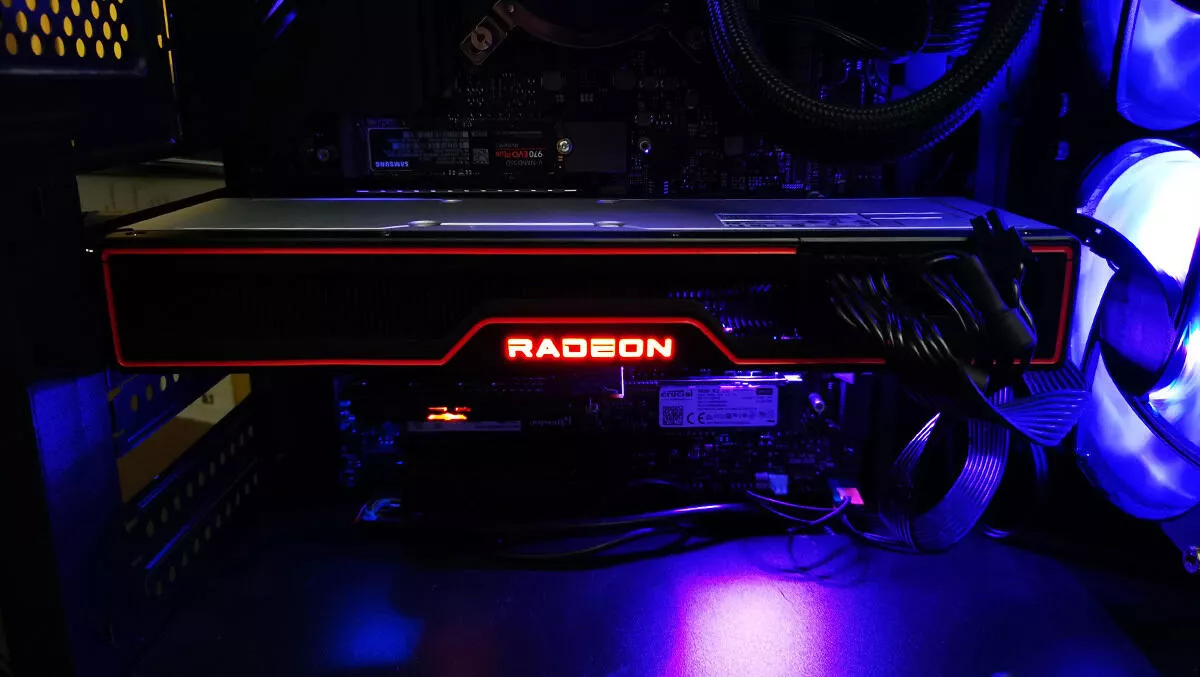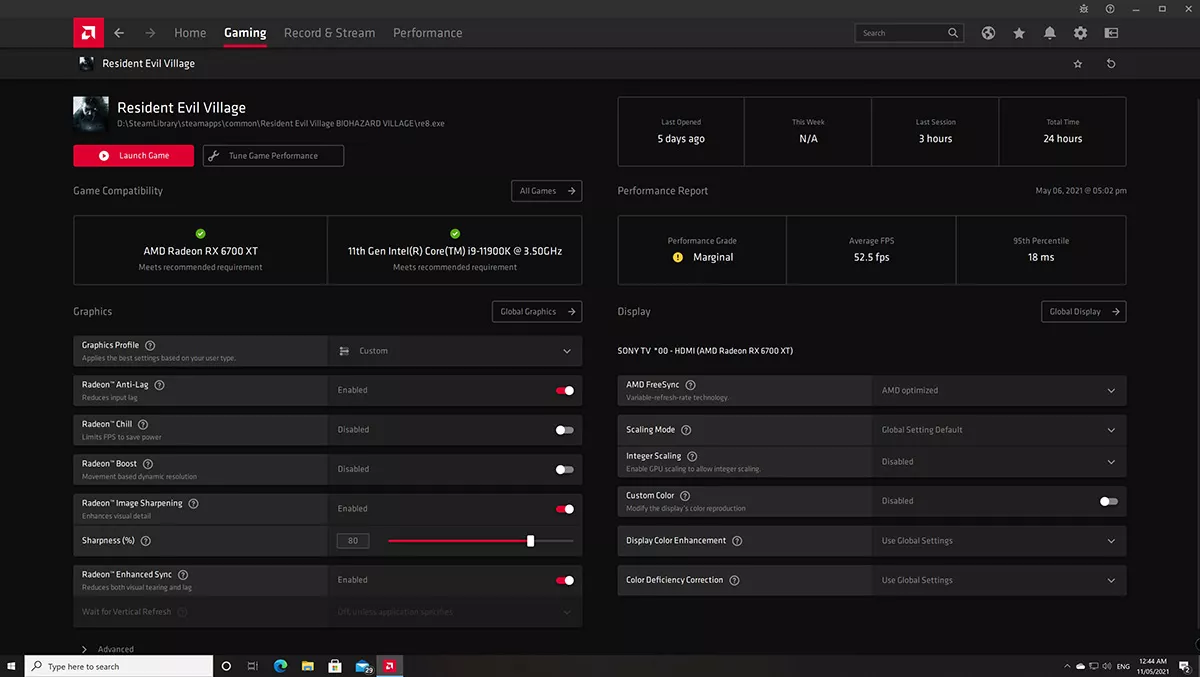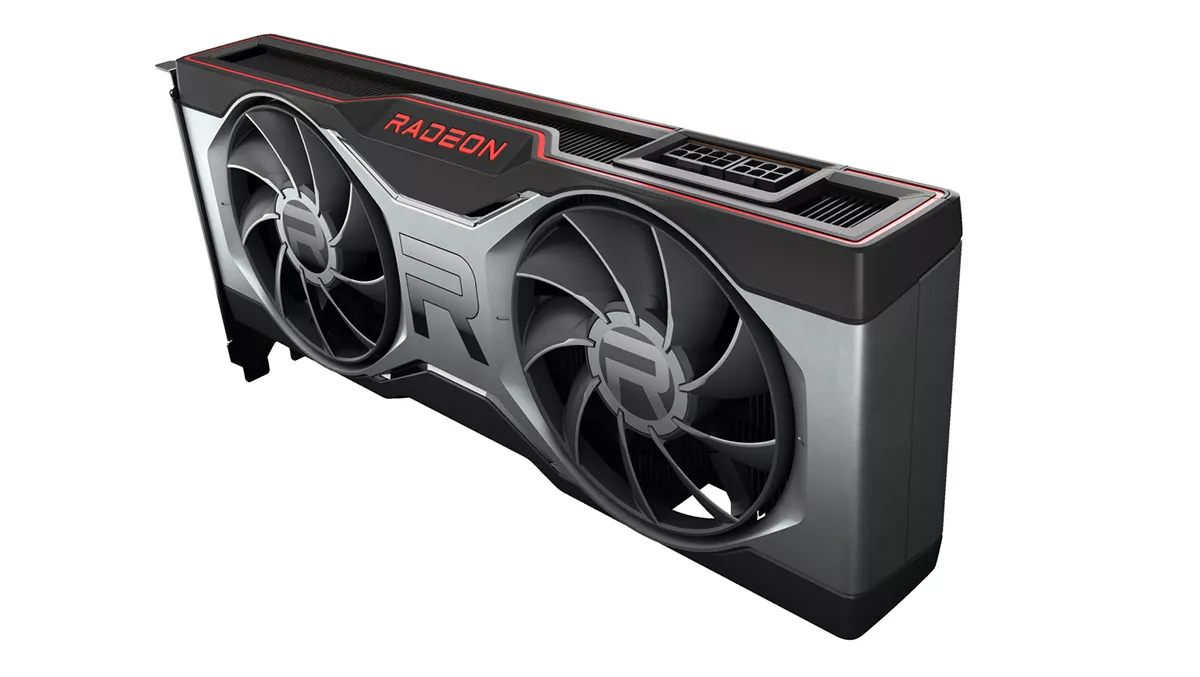
Hands-on review: AMD Radeon RX 6700 XT graphics card
The unprecedented scarcity of beefy gaming GPUs due to semiconductors shortages and cryptocurrency miners makes reviewing such a device akin to rubbing it in. Desperate gamers are currently paying well the odds for whatever GPUs that they can get their hands on. As new stock arrives at computer stores it gets allocated to new systems rather than for retail as an upgrade.
This situation, whilst still painful for anyone wanting an upgrade, is slightly alleviated by the large range of decent GPUs now available (if you can find one). For years Nvidia has dominated the market and still, with the RTX 3090, produces the world's fastest gaming GPU.
But the further you move away from the expensive GPUs reserved for members of the PC master race, Nvidia's rival, AMD, steps up to the plate. Just as they have with Intel, in providing cheaper, faster gaming CPUs, AMD is now nipping at Nvidia's heels when it comes to GPUs.
The AMD Radeon RX 6700 XT is a mid-range GPU that, performance-wise, according to my 3DMark test history, sits somewhere between the venerable Nvidia GTX 1080 Ti and its replacement the RTX 2080 Ti. This puts in in the same performance bracket as the similarly priced Nvidia RTX 3060. As a gaming GPU (and I can't believe I'm saying this of a NZ$1200 GPU), it could be classified as a budget card.
The RX 6700 XT is a solid unit with a metal backplate completely covering the PCB. Cooling is via two fans exhausting into the case and not out the rear (which I'd prefer). AMD's trademark red LED lighting looks stylish in a windowed case.
As is the norm for a decent GPU, the card takes up two slots in the PC case. It has a length of 267mm, which should be fine for most ATX case set-ups. The AMD branded card supplied requires one 8-pin PCIe connector and one 6-pin PCIe connector, which should be accommodated by most power supply units. AMD recommends a 650W PSU as a minimum, but I'd not settle for anything less than 750W in a modern PC to be on the safe side. The card has three DisplayPort 1.4 outputs and one HDMI 2.1 output. The GPU has a very respectable 12GB of GDDR6 memory, more than enough for even the most demanding of today's games.
The Timespy Extreme benchmark, designed to test 4K-capable Direct X 12 GPUs like the RX 6700 XT netted a very reasonable score of 5348. The result is a lot closer to the Nvidia's RTX 2080 Ti's 6202 than the RX 6700 XT's stablemate, the AMD RX 6800's with its 3D Mark score of 6076.
As with Nvidia's RTX graphics cards, AMD's latest GPUs also feature real-time raytracing. Whilst still a bit behind Nvidia's efforts in this new field, the Radeon RX 6700 XT does a pretty good job rendering lifelike shadows and reflections utilising ray-tracing.
The 5970 that the 6700 XT scored in 3D Mark's Port Royal ray-tracing benchmark is a lot lower than the 9367 score that I previously attained with an Nvidia RTX 2080 Ti. In any case, though, 3D Mark tells me that I should expect in the region of 105 frames per second in Battlefield V, which isn't bad.
Whilst I can pour through benchmarks till my eyes bleed, AMD kindly sent over a pre-release copy of Resident Evil Village and gave me access to the beta version of the drivers tuned for Capcom's latest scare-fest.
I tested the AMD Radeon RX 6700 XT with an Intel 11th Gen i9 11900K on an ASUS Z590 Maximus XIII Hero motherboard. With the settings turned up to almost maximum, including ray-tracing, I was able to get a pretty consistent 60 frames-per-second in 4KHDR. It's not something that I was expecting.
Sure, in some of the more detailed areas there was a drop in performance, suggesting I was pushing it a little bit. Dial down the quality just a tad had all the scares of the village running at a solid 60fps, still with ray-tracing on, the maximum for my TV.
As well as the superb Resident Evil Village, I also tested the GPU with the Horizon Zero Dawn benchmark. Horizon Zero Dawn is a beautiful game with some stunning and quite hardware taxing environments. With the resolution set on 4K HDR and V-Sync on, and the graphics cranked up to the max, the Radeon RX 6700 XT still managed 60 frames per second.
AMD worked with Capcom to get the most out of Resident Evil Village when running with Radeon GPUs and Ryzen CPUs. I'm pretty sure that AMD's recently revamped Adrenaline driver software also had something to do with it.

In the Adrenaline software, games optimised for Radeon GPUs get an additional performance option, Radeon Boost- which adjusts resolution to maintain frame rate when things get busy. The Adrenalin software also includes Radeon Anti-Lag for better control and Radeon Image Sharpening. The Adrenalin software also allows for manual and automatic overclocking, on a per-game basis, to get the most out of the GPU, whilst keeping things stable.
AMD's Adrenaline software is a one-stop-shop for performance tuning and cataloguing your games. The software also has a built-in recording and live streaming suite. Streamers can set up scenes and control their stream using just the Adrenalin software. It's not as sophisticated as OBS, but it is accessible and easy to use.
Machines equipped with AMD Ryzen CPUs can also use the Adrenaline software to tune their CPU performance. It's an impressive piece of software and, whilst I'm loath to say it, trumps Nvidia's similar GeForce Experience software.
AMD's Radeon RX 6700 XT is not in the same league as Nvidia's top-end offerings such as the GeForce RTX 3080, but it still packs a punch. It delivers decent performance for today's games. In the benchmark, ray tracing performance was less than stellar.
The card did, however, perform well playing Resident Evil Village in 4K with ray-tracing switched on. Whilst the 6700 XT is a very capable card right, in the fast-moving world of video game graphics, you may find yourself needing an upgrade in a year or so, depending on how you like your visuals.
At NZ$1200, it's not a cheap card, but that is the current state of the market for GPUs. While you are more likely to get hold of an RX 6700 XT than anything else, even keen gamers shouldn't think that they are just making do with the performance of these great AMD GPUs.



